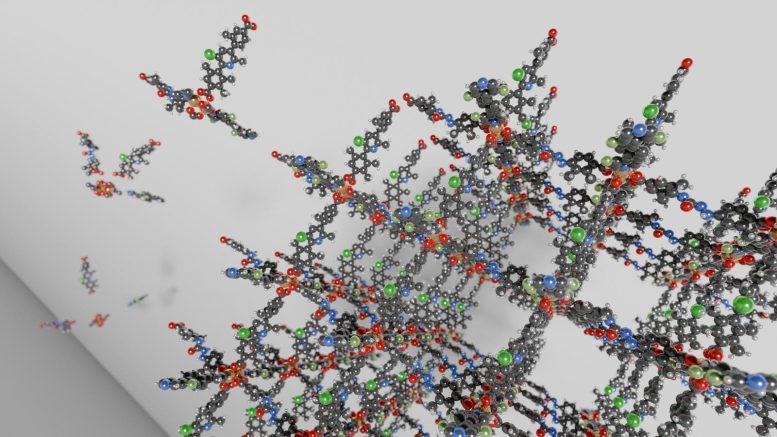
Scientific visualization of the AI-guided assembly of a novel metal-organic framework with high carbon dioxide adsorption capacity and synthesizable linkers. Building blocks, predicted by generative AI, are shown on the left, while the final AI-predicted structure is shown on the right. Credit: Xiaoli Yan/University of Illinois Chicago and the ALCF Visualization & Data Analytics Team
Metal-organic framework (MOF) materials can be used in many different applications, from catalysts to energy converters.
Generative AI techniques,
The Complexity of MOF Configurations
MOFs have three kinds of building blocks in their molecules — inorganic nodes, organic nodes, and organic linkers. These can be arranged in different relative positions and configurations. As a result, there are countless potential MOF configurations for scientists to design and test.
Accelerating Discovery through AI and Supercomputing
To speed up the discovery process, researchers from the U.S. Department of Energy’s (DOE) Argonne National Laboratory are following several pathways. One is generative artificial intelligence (AI) to dream up previously unknown building block candidates. Another is a form of AI called machine learning. A third pathway is high-throughput screening of candidate materials. And the last is theory-based simulations using a method called molecular dynamics.
Joining Argonne in this project are researchers from the Beckman Institute for Advanced Science and Technology at the University of Illinois Urbana-Champaign (UIUC), the University of Illinois at Chicago, and the SciTechDaily